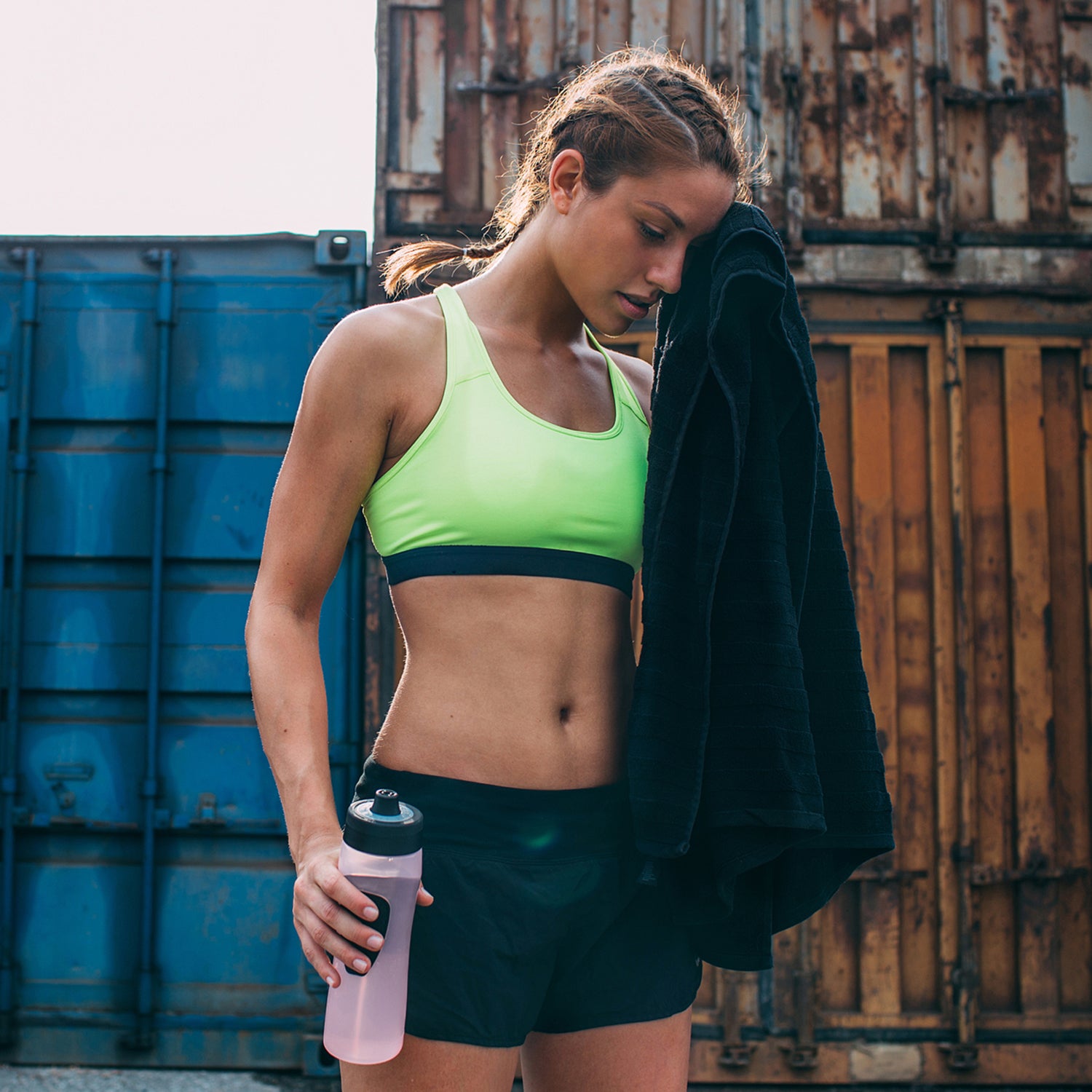One of the highest sweat rates ever recorded was that of marathon runner Alberto Salazar at the 1984 Olympics in Los Angeles. In the months leading up to the games, which were expected to be oppressively hot, the marathoner was put through a regimen of temperature acclimation training with the goal of helping him adapt to running in the heat. While┬áSalazar placed only 15th overall,┬áthe program was deemed a success, physiologically speakingÔÇövitals taken after the race found that SalazarÔÇÖs hormonal and thermoregulatory systems . His body had compensated by causing him to sweat at an incredibly high rateÔÇöabout three┬áliters per hour, compared to the roughly one liter per hour for an average human.╠ř┬á
Researchers have been looking at the effects of heat on athletic performance for decades, and their results have been consistently surprising. Studies have found that, in addition to an increased rate of perspiration, training in the heat can increase an athleteÔÇÖs blood plasma volume (which leads to better┬ácardiovascular fitness), reduce overall core temperature, reduce blood lactate, increase skeletal muscle force, and, counterintuitively, make a person train better in cold temperatures. In fact, heat acclimation may actually be more beneficial than altitude training in eliciting positive physiological adaptations, says Santiago Lorenzo, a professor of physiology at Lake Erie College of Osteopathic Medicine and a former decathlete at the University of Oregon. ÔÇťHeat acclimation provides more substantial environmental specific improvements in aerobic performance than altitude acclimation,ÔÇŁ he says. And in contrast┬áto the┬á┬áphilosophy, we more quickly adapt to heat stress than we do to hypoxia.╠řIn other words, heat training not only does a better job at increasing V02┬ámax than altitude, but it also makes athletes better at withstanding a wider range of temperatures.╠ř
Heat training not only does a better job at increasing V02 max than altitude, but it also makes athletes better at withstanding a wider range of temperatures.
Athletes can adapt to heat in one of two ways. The first is through incremental improvements in tolerance over timeÔÇöwork out in the heat a little bit every day, and eventually your body will dissipate heat more effectively. The second way is through┬áthermotolerance, which is a cellular adaptation to an extreme heat experience,┬álike suffering such severe dehydration after a run that you need an IV. Essentially, if you shock your system, your body will be able to┬áwithstand greater temperature stresses later on. But successful heat adaptation is difficultÔÇöand clearly dangerousÔÇöto achieve outside of controlled settings. Lorenzo explains that performance gains are possible only when athletes elevate their core body temperature, and without careful monitoring, itÔÇÖs possible to elevate your core temperature to .╠ř
When performed safely, however,┬áheat training┬ácan have extraordinary┬áeffects.╠řThis phenomena fascinates Chris Minson, a professor of human physiology at the University of Oregon, who studies heat acclimation responses in athletes. According to , heat training┬ácan┬áexpand┬áblood plasma volume, but Minson┬ásays there also seem to be inexplicable changes to the heartÔÇÖs┬áleft ventricle, which helps to increase oxygen delivery to the muscles. In addition, he says that athletes who train in warm temperatures generally get better at regulating heat by sweating earlier, as Salazar did, or developing a colder resting body temperature.╠ř
A by a group of researchers in New Zealand also found that overall volume of blood plasma increased at a greater rate when athletes did not drink water during┬áexercise.╠řWhile some coaches are carefully experimenting with dehydration, Minson and Lorenzo are not┬ábecause it adds too much additional stress. However,┬áthey do say┬áthat this type of training┬ácan be beneficial because it produces a higher number of ÔÇťheat shockÔÇŁ protein┬ácells.
Ahead of Western States this June, ultrarunning coach Jason Koop┬áworked on heat training with┬áAmanda Basham and┬áeventual winner┬áKaci┬áLeckteig.╠řKoop┬ábelieves this type of┬áacclimating is┬áa good example of blending an academic concept with real-world training. But, says Koop, ÔÇťat a certain level, you have to compromise training quality for the heat acclimation. Acclimating to the heat is additional┬ástress [on the body],┬ájust like more miles or intervals, so you canÔÇÖt simply pile it on. Something on the training side has to give.ÔÇŁ
One method of heat acclimation that Minson uses with his athletes is to do hard workouts on colder days or earlier in the morning, and┬áthen start training in hotter conditions with less intensity. He is┬áalso looking into adding heat in ways that wouldnÔÇÖt require an athlete to train in high temperatures at allÔÇöusing hot tubs, for instance.╠ř
All this being said, not everyone responds to heat at the same rate┬áor with the same physiological gains, which makes it similar to altitude training in that it might make a high-performing age grouper, college athlete, or elite a little better, but it wonÔÇÖt compensate for intelligent, consistent training.
How to Incorporate Heat Acclimation into Your Training Schedule
When acclimating to heat, youÔÇÖll be forced to compromise training┬áquality, says┬áKoop. While he understands the benefits of heat acclimation, he still prioritizes smart, solid training. But if you want to incorporate heat into your workouts, hereÔÇÖs how he recommends doing it safely.╠ř
1.╠řFirst, pick a protocol (sauna, hot bath, or exercising in the heat) that minimizes the impact on training, both physically and logistically.
2.╠řKoop most commonly recommends that his athletes use a dry sauna immediately after running. ÔÇťIt doesnÔÇÖt impact training nearly as much as running in the heat, and the effects are similarly positive,ÔÇŁ he says. He often tells his athletes┬áto not drink water during these sessions┬áto enhance the effect. Koop┬árecommends spending 20-to-30-minutes in the sauna, depending on tolerance.╠ř
3.╠řKoop says that when he has his athletes exercise in the heatÔÇöeither naturally or by wearing extra clothing to simulate the experienceÔÇöit will be on a long, slow day for 60 to┬á90 minutes. The time completely depends on the athleteÔÇÖs tolerance and previous experience. But he stresses to not do this on a recovery day, because heat training is an added stress on the body. Koop recommends drinking 30 to┬á40 ounces of an electrolyte drink per hour during these sessions ┬áAnd for safety, he advises using┬álow-traffic sidewalks and bike pathsÔÇönot┬átrails.╠ř
4.╠řDespite the benefits of heat training, Koop reminds his athletes that running in the heat is extremely difficult and usually replaces a hard day. ÔÇťYou are substituting one potential gain for another one,ÔÇŁ he says. In other words, use it carefully.


